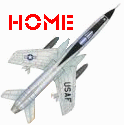Plastic Wings
MC Donnell Douglas F/A-18A and F/A-18C
F-18A VMFA-333 Shamrocks and F-18C
VMFA-314 Black Knights
Sheik Isa AB Bahrein - Operation desert Storm 1991
Klik de miniaturen voor een grotere afbeelding.
De Hornet in Desert Storm
Ik liep al een tijdje rond met het idee om twee F-18's in Desert Storm uitvoering te maken. Het duurde even voor ik de decals vond met de gezochte eenheids kentekens.
De kisten moesten er behoorlijk gebruikt uitzien en een volle wapenlast dragen, en voorgesteld in een simpel diorama net voor het begin van een missie over Irak.
De kits waren een teleurstelling. Veel pasproblemen rond de inlaten, en nog hier en daar. De onderdelen welke de flaps en flaperons op hun plaats moeten houden zijn pietepeuterig
en de afdekking tussen vleugels en flaps is moeilijk passend te maken. De voorvleugels lieten zich moeilijk op de juiste plaats brengen.
Tel daar nog het gemis aan bewapening en piloot bij en je komt tot de conclusie dat deze kits hun geld niet waard zijn.
Deze kits waren een strijd van begin tot eind, ik begon er aan in augustus 2008 en was er klaar mee begin januari 2010...
The Hornet in Desert Storm
For quite some time I wanted to build two F-18's set in the Desert Storm conflict. It took me a while before I found a decalsheet with the unit markings I was looking for.
I wanted the planes to look dirty and toting a full load of weapons, set in a simple diorama just before the start of a mission over Iraq.
The kits really were a dissapointment. Lots of fit issues around the inlets and in some other places. The actuators that connect flaps and flapperons to the wings are fiddly
and the sealing plate that covers the gap between wing and flaps is a very difficult fit. The leading edges were reluctant to stay where I wanted them to.
Add to the above the lack of armament and a pilot and one has to conclude these kits arren't worth the money.
These kits were a struggle from start to finish. I started them in august 2008 and had them ready by january 2010...
Nieuwe technieken
Tijdens de bouw probeerde ik een paar nieuwe technieken uit. Voor het afplakken van de wielen weet ik al lang dat een mooi rondje uit plakband snijden geen sinecure is.
Toen ik in een warenhuis doorslagen in diverse diameters zag liggen (voor een paar euro 't stuk) dacht ik het daar eens mee te proberen. Ten slotte kost zo'n doorslag niet
meer dan een Eduard masking set, en kan je 'm honderden keren gebruiken. Ik was behoorlijk tevreden met het resultaat.
New techniques
During this build I tried my hand at some new techniques. Wheelmasking is a task that requires patience and precision: it's not easy to create the perfect round mask.
When I spotted a set of punches in all sorts of diameters (for a couple of euro's a piece) I thought I might have a go with them. After all them punches are less expensive
then an Eduard masking set and can be reused hundreds of times. I was more than satisfied with the result.
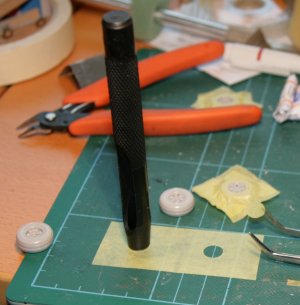
Om een echt vuil aspect te geven voorzag ik beide modellen van een stevige preshading op zowat alle paneellijnen en nog een beetje meer daar waar bewegende delen zitten.
To obtain a really dirty look I gave both models a thorough preshading on almost every panel line and yet some more where the moving parts are.
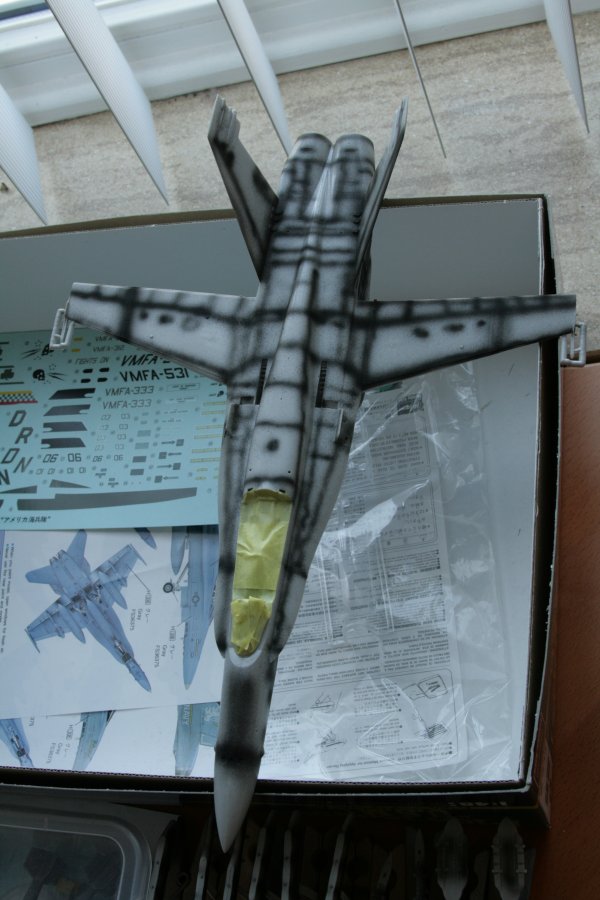
Omdat een Hornet heel vage overvloeien heeft tussen de verschillende grijstonen waarin hij is gespoten moest ik m'n maskers op een afstand van het model kunnen houden
zodat het model ook een vage scheiding tussen de kleuren zou krijgen.
Ik lostte m'n probleem op door worstjes te rollen van Play-Doh en deze met wat plakband op z'n plaats te houden. Na gebruik stop je de Play-Doh terug in hun potje om ze voor een volgend model te herbruiken.
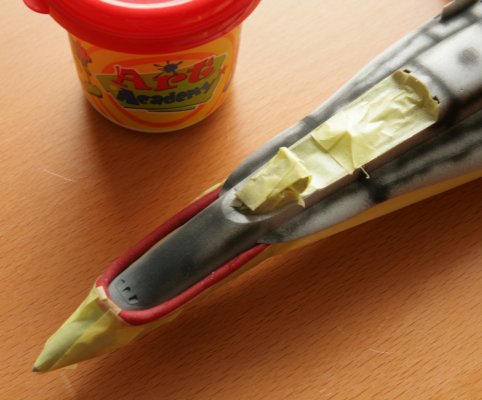
Ik lostte m'n probleem op door worstjes te rollen van Play-Doh en deze met wat plakband op z'n plaats te houden. Na gebruik stop je de Play-Doh terug in hun potje om ze voor een volgend model te herbruiken.

As the Hornet's has a very vaguely defined demarcation between the different greys in which it is sprayed, I had to find a way to keep the paintmasks some distance
away from the model in order to obtain a similar vaguely defined demarcation.
I solved my problem by rolling thin sausages from Play-Doh and by keeping them in place with some masking tape. After use you simply put the Play-Doh back in it's container to reuse it for another model.
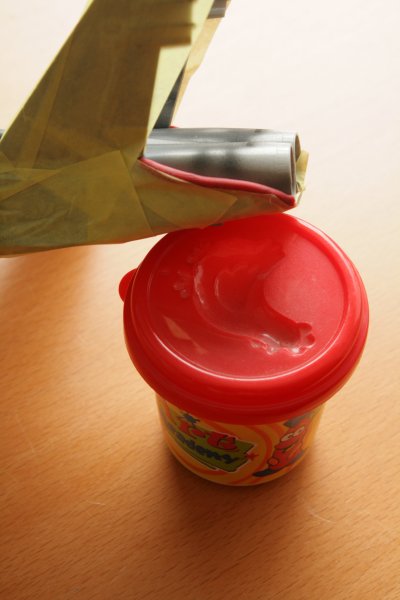
I solved my problem by rolling thin sausages from Play-Doh and by keeping them in place with some masking tape. After use you simply put the Play-Doh back in it's container to reuse it for another model.

De diorama's
De F-18A heeft de kleuren (nou ja) van VMFA-333 Shamrocks. Het toestel staat geladen op Sheik Isa AB te Bahrein voor weer een nieuwe missie. Een droptank onder de romp, een laser aanwijsgondel
aan de bakboordsinlaat. Onder de vleugels zien we twee GBU's en twee Mavericks.
Een paar Sidewinders van het juiste type maakt de zaak af.
Het toestel staat al een paar uurtjes stil, het gebrek aan oliedruk zorgt ervoor dat de Hornet alles laat hangen.
Zelfs de staartroeren geven toe aan de zwaartekracht en hangen allebei naar buiten...
De piloot klimt net de ladder op, terwijl de crewchief reeds klaar zit om de piloot te helpen met de gordels. Een arme donder volgt met de vlieghelm en de kaarten in een draagtas.
VMFA-333 was het laatste reguliere eskader mariniers dat de F-4 Phantom gebruikte maar stapte uiteindelijk toch over op de F-18 in oktober 1987.
Tijdens hun laatste inzet in de Perzische Golf in 1990-1991 als onderdeel van Operatie Desert Storm vlogen de Shamrocks meer dan 700 gevechtsmissies zonder verliezen en gooiden ze
meer dan een miljoen kilo wapens op de iraakse troepen.
Gekend als Fighting Shamrocks of Trip Trey nam het eskader deel aan de actie in de Tweede Wereldoorlog, de oorlog in Vietnam en Desert Storm.
De vliegtuigen van de eenheid waren makkelijk herkenbaar aan de rij van drie klavertjes die op hun staart waren geschilderd. VMFA-333 werd ontbonden op 31 maart 1992.
The dioramas
The F-18A wears the colours (well, kinda sorta) of VMFA-333 Shamrocks. The plane stands at Sheik Isa AB in Bahrein, loaded for yet another mission. An underbelly droptank, a laser designator
on the starboard intake. Under the wings we see two GBU's and two Mavericks.
A couple of Sidewinders of the correct type round out the load out.
The aircraft has been parked here for a few hours now. Lack of hydraulic pressure has caused the Hornet
to let it all hang out. Even the tail rudders yield to the forces of gravity as both are drooping outwards...
The pilot is just climbing the boarding ladder while the crewchief sits ready to help strap in the pilot. A poor sod follows him carying a bag containg the pilot's helmet and some maps.
VMFA-333 was the last regular Marine squadron to operate the F-4 Phantom but finally transferred to the F-18 in october 1987.
During their final deployment to the Persian Gulf in 1990-1991 as part of Operation Desert storm, the Shamrocks flew more than 700 combat missions without loss and delivered more than
two million pounds of ordnance against Iraqi forces.
Known as Fighting Shamrocks and Trip Trey the squadron participated in action during World War II, the Vietnam War and Operation Desert Storm.
The squadron's aircraft were easily recognizable by the row of three shamrocks on the vertical stabilizers of their aircraft. VMFA was deactivated effective march 31 1992.
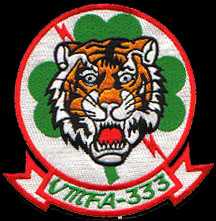
De F-18C behoort toe aan VMFA-314 Black Knights op Sheik Isa AB te Bahrein. Het is geladen met een droptank onder de romp, een laser aanwijsgondel
aan de bakboordsinlaat en een FLIR gondel onder de stuurboorsdinlaat. Onder de vleugels zien we twee Walleye glijbommen (ik wou al heel lang zo'n stel Walleyes onder een model,
en VMFA-314 is de enige eenheid die tijdens de Golfoorlog deze wapens gebruikte). We zien ook nog vier Mk82 500 pondsbommen met een brandwerende coating. Aan de vleugeltips twee Sidewinders.
Terwijl de grondploeg de Remove Before Flight vlaggetjes weghaalt, houdt de piloot beide handen in de lucht zodat hij niet per abuis op een knopje drukt...
Toen ze zich tijdens de zomer van 1990 klaarmaakten om naar de westelijke Stille Oceaan terug te keren werden de Black Knights snel ingezet in de Perzische Golf. Ze waren het eerste mariniers F-18 eskader dat in Bahrein aankwam om deel te nemen aan operatie Desert Shield als deel van Marine Air Group 70. Gedurende bijna zes maanden hielden de Black Knights 24 uur per dag gevechtspatrouilles over de Arabische Golf.
Op 16 januari 1991 werd Desert Shield Desert Storm. De Black Knights namen deel aan escort missies, anti luchtdoelraket en grondaanvalsmissies en spoorden vijandelijke gevechtsvliegtuigen op. VMFA-314 was ook het enige mariniers eskader dat de Walleye II slimme bom gebruikte tijdens Desert Storm.
De Black Knights keerden van de Golf terug bij het einde van de vijandelijkheden in maart 1991 zonder één vliegtuig of lid van het eskader te verliezen.
Terwijl de grondploeg de Remove Before Flight vlaggetjes weghaalt, houdt de piloot beide handen in de lucht zodat hij niet per abuis op een knopje drukt...
Toen ze zich tijdens de zomer van 1990 klaarmaakten om naar de westelijke Stille Oceaan terug te keren werden de Black Knights snel ingezet in de Perzische Golf. Ze waren het eerste mariniers F-18 eskader dat in Bahrein aankwam om deel te nemen aan operatie Desert Shield als deel van Marine Air Group 70. Gedurende bijna zes maanden hielden de Black Knights 24 uur per dag gevechtspatrouilles over de Arabische Golf.
Op 16 januari 1991 werd Desert Shield Desert Storm. De Black Knights namen deel aan escort missies, anti luchtdoelraket en grondaanvalsmissies en spoorden vijandelijke gevechtsvliegtuigen op. VMFA-314 was ook het enige mariniers eskader dat de Walleye II slimme bom gebruikte tijdens Desert Storm.
De Black Knights keerden van de Golf terug bij het einde van de vijandelijkheden in maart 1991 zonder één vliegtuig of lid van het eskader te verliezen.
The F-18C belongs to VMFA-314 Black Knights at Sheik Isa AB at Bahrein. It is loaded with an underbelly droptank, a laser designator
on the starboard intake and a FLIR pod under the starboard intake. Under the wings we see two Walleye glide bombs (I 've been wanting to put a pair of Walleyes under a model for years,
and incidentally VMFA-314 is the only unit to have used this weapon during the Gulf War). We also see two pairs of Mk82 500 pound bombs with a fire retardant coating.
On the wingtips two Sidewinders.
While the ground crew is removing the Remove Before Flight flags, the pilot is holding both his hands in the air so as not to accidentally press any buttons...
In the summer of 1990, preparing to return to Western Pacific, the Black Knights were rapidly deployed to the Persian Gulf. They were the first F-18 Marine squadron to arrive in Bahrein for Operation Desert Shield as part of Marine Air Group 70. For nearly six months the Black Knights maintained a 24 hour a day combat air patrol over the Arabian Gulf.
On january 16 1991, Operation Desert Shield became Operation Desert Storm. The Black Knights mission included escort, HARM, air to air fighter sweep and strike. VMFA-3214 were also the only Marine squadron to utilize the Walleye II smart bomb during Desert Storm.
The Black Knights returned from the Gulf at the end of hostilities in march 1991, without the loss of any squadron members or aircraft.
While the ground crew is removing the Remove Before Flight flags, the pilot is holding both his hands in the air so as not to accidentally press any buttons...
In the summer of 1990, preparing to return to Western Pacific, the Black Knights were rapidly deployed to the Persian Gulf. They were the first F-18 Marine squadron to arrive in Bahrein for Operation Desert Shield as part of Marine Air Group 70. For nearly six months the Black Knights maintained a 24 hour a day combat air patrol over the Arabian Gulf.
On january 16 1991, Operation Desert Shield became Operation Desert Storm. The Black Knights mission included escort, HARM, air to air fighter sweep and strike. VMFA-3214 were also the only Marine squadron to utilize the Walleye II smart bomb during Desert Storm.
The Black Knights returned from the Gulf at the end of hostilities in march 1991, without the loss of any squadron members or aircraft.
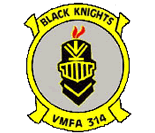
Data
Kit: Hasegawa P25 and P26Glue: mainly Slater's MEK-Pak and cyano. White glue for the clear parts.
Putty from Tamiya and masking Tesa tape.
Decals: F/A-18A: kit decals. F/A-18C Repli-Sclae 48-5040
Ejection seat: Verlinden
Ordnance: Hasegawa weapons sets
Figurines: Hasegawa U.S. Pilot/Ground crew set
Paint: Humbrol enamels 177,128 and Alclad metalizers. Artist's oil paints for the cockpit.
Sealing: Johnson's Future.
Airbrush: Aztec
Wash: artist's oil paints thinned with turpentine.
Weathering: artists chalks and pencils.
Varnish: Revell Matt
Documentation: F/A-18 Hornet in action, Lou Drendel / Lock On 15, Verlinden Productions / Uncovering the Boeing Hornet by Danny Coremans / Air war over the Gulf by Eric Micheletti
Steven De Mulder















